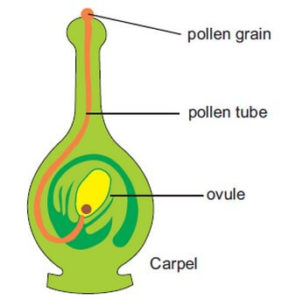Movement may be defined as the change in position of an organism with respect to its surrounding. Although all the plants are fixed at a place, yet they show movements. In plants the movements are shown by their parts in the form of growth. These movements are caused due to response of plants to external stimuli such as light, water, gravity and chemicals etc. In plants two types of movements take place:
1. Tropic movements and
2. Nastic movements
Tropic Movements or Tropism
The movement of a plant in the direction of stimulus is known as tropic movement or tropism.
Types of Tropism
Tropic movements are of four types. These are:
1. Phototropism
The movement of a part of the plant towards light is called phototropism. Growth of aerial parts of a plant towards light is an example of phototropism.

2. Geotropism
The movement of a part of the plant towards gravity is called geotropism. Growth of roots of plants in downward direction is an example of geotropism.

3. Hydrotropism
The movement of a part of the plant towards water is called hydrotropism, e.g., movement of roots.

4. Chemotropism
The movement of a part of the plant towards a chemical is called chemotropism. During the process of fertilization the movement of pollen tube towards ovule due to secretion of a sugary chemical in the ovary is an example of chemotropism.

Nastic Movements
These are nondirectional movements which takes place neither towards nor away from the stimulus. The best example of nastic movement is folding and drooping of leaves of ‘touch me not’ plant when its leaves are touched with fingers.

Test Your Understanding and Answer These Questions:
- Define geotropism.
- Discuss phototropism.
- Define chemotropism.
- Define hydrotropism.
- Name any two types of tropism.
- What are nastic movements? Give an example.
- Differentiate between tropic and nastic movements.
- Explain different types of tropic movements in plants.
